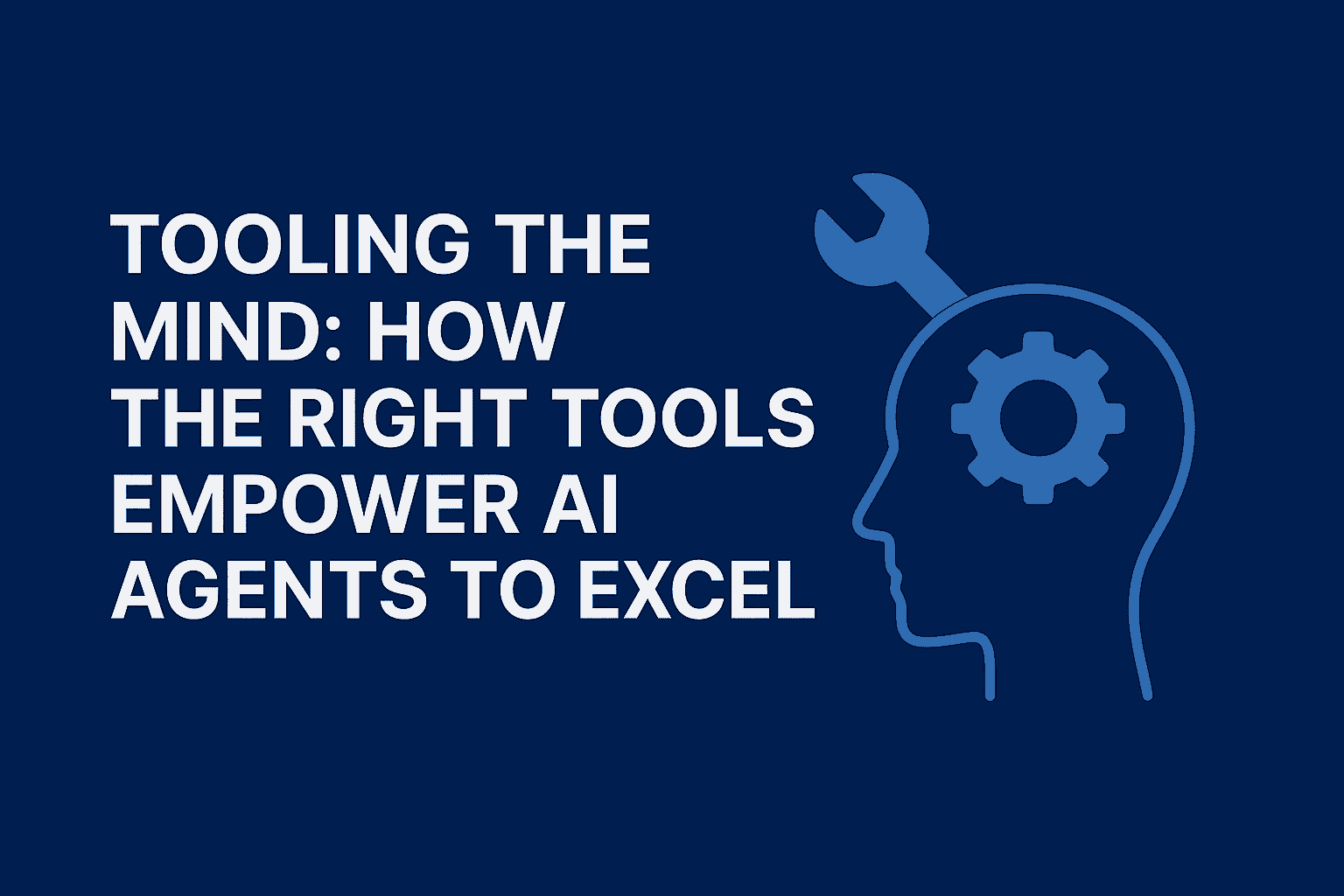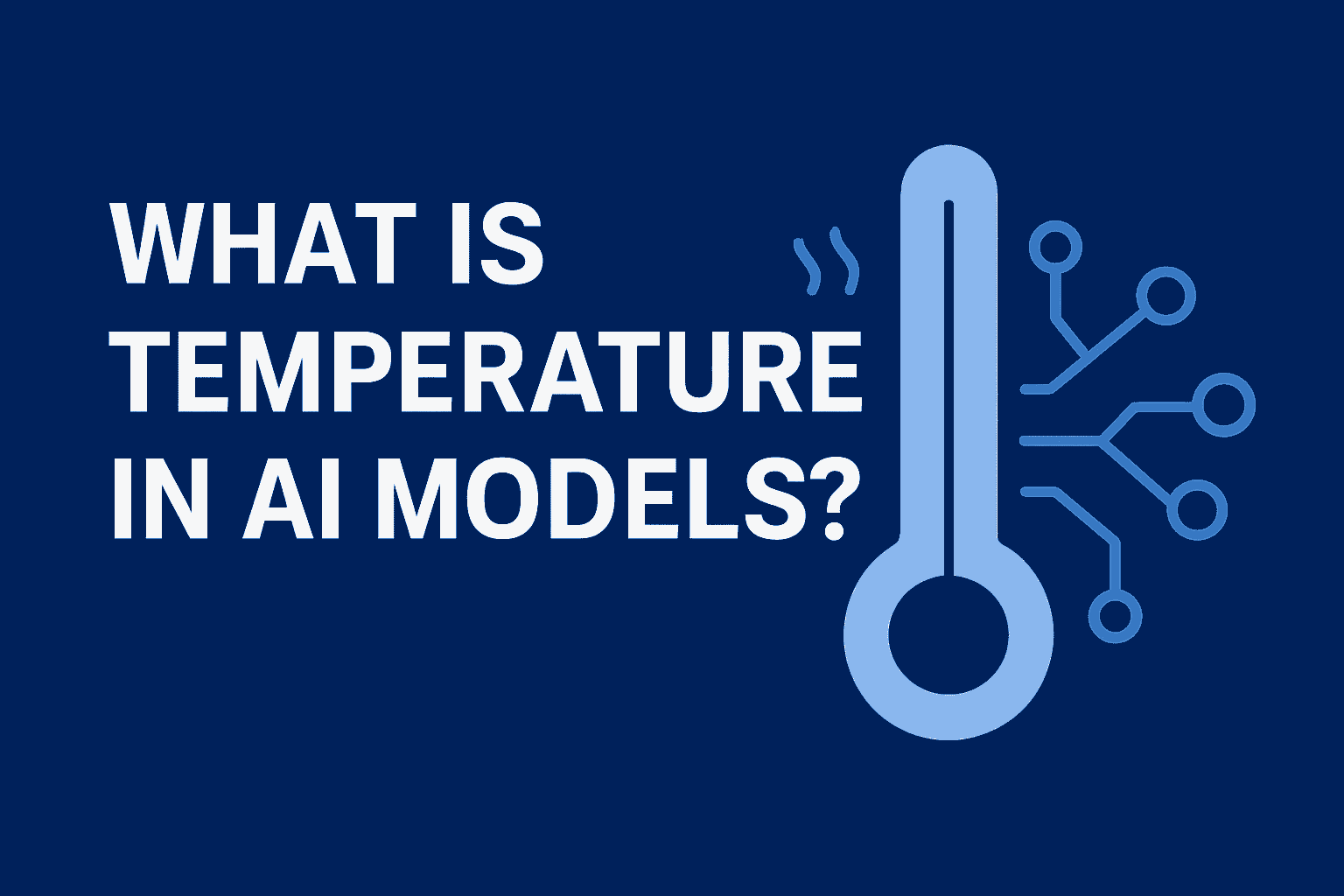
🤖 Tooling the Mind: How the Right Tools Empower AI Agents to Excel
Ai engineer
AI agents become powerful not just through language models but through the tools they use. Tools let agents fetch real-time data, automate tasks, and interact with external systems—from booking flights to generating visuals. By designing clear, secure, and task-specific tools, you can transform AI agents into reliable problem-solvers that tackle real-world challenges with precision.
🤖Introduction
Artificial Intelligence (AI) agents are transforming how we interact with technology. From virtual assistants like Siri and Alexa to automation bots streamlining workflows and intelligent copilots aiding developers, these systems are becoming integral to our daily lives. However, their true power lies not solely in the language models (LLMs) that drive them but in the tools they wield. These tools allow AI agents to go beyond generating text to performing meaningful, real-world actions.
Imagine an AI agent as a skilled worker. Without tools, it’s limited to offering advice or generating text based on its training. But equip it with the right tools, and it can execute tasks like searching the web, scheduling appointments, performing calculations, or even processing transactions. This post dives into the world of AI tools, exploring:
- What tools are and why they’re critical.
- The different types of tools AI agents use.
- Best practices for designing and integrating tools.
- Real-world examples of AI agents leveraging tools effectively.
By the end, you’ll understand how to harness tools to build smarter, more capable AI agents.

⚓ What Are Tools?
At its core, a tool is a function or capability provided to an AI language model that enables it to perform specific actions beyond generating text. Think of tools as extensions that bridge the gap between an AI’s knowledge and the real world, allowing it to interact with external systems or data sources.
✂️ Why Tools Matter
Large language models are impressive, but they have limitations. They can sometimes produce inaccurate or fabricated information (known as "hallucination") and rely on training data that may become outdated. Tools address these challenges by providing access to accurate, real-time information and enabling precise actions. For instance, instead of guessing the weather, an AI with a web search tool can fetch the latest forecast directly from a reliable source.
** 🔦 Common Examples of Tools**
Here are some widely used tools that enhance AI capabilities:
- Web Search: Allows the AI to retrieve up-to-date information from the internet, such as news, weather, or stock prices.
- Image Generation: Enables the creation of visuals, such as diagrams or marketing graphics, using models like DALL•E.
- Retrieval: Pulls specific data from databases or vector stores, ideal for accessing proprietary or user-specific information.
- API Interface: Connects the AI to external services, such as GitHub for code management or YouTube for video data.
- Calculator: Handles mathematical computations reliably, ensuring precision for tasks like budgeting or statistical analysis.
** 🔮 What Makes a Good Tool?**
A well-designed tool includes:
- A clear name and description to help the AI understand its purpose.
- A callable function that the AI can trigger.
- Defined arguments with data types (e.g., integers, strings) to ensure proper input.
- Optional output schemas to standardize the results the tool returns.
By equipping AI agents with these tools, you enable them to perform tasks with greater accuracy and relevance.
🚦 Categories of Tools
AI tools can be grouped into several categories, each serving a unique purpose. Below, we explore the main types and provide examples of how they’re applied.
-
🔎 Information Gathering
These tools allow AI agents to access external data sources to provide accurate, up-to-date information.
- Examples: Web search, web crawling, or retrieval from a database or vector store.
- Use Case: A customer support bot uses a retrieval tool to fetch the latest product documentation, ensuring it provides accurate answers to user queries.
-
📅 Productivity
Productivity tools streamline workflows by integrating with tools like calendars, email clients, or file systems.
- Examples: Scheduling meetings, drafting emails, or accessing shared documents.
- Use Case: A virtual assistant schedules a team meeting by checking calendar availability and sending invites, saving users time.
-
🎨 Creative
Creative tools empower AI agents to generate multimedia content, such as images, audio, or videos.
- Examples: Generating marketing visuals, composing music, or creating video thumbnails.
- Use Case: A marketing agent designs social media ads by combining text generation with an image generation tool.
-
⚙️ Action & Transactions
These tools enable AI agents to perform actions like processing payments, calling APIs, or automating tasks.
- Examples: Booking flights, triggering workflows, or interacting with e-commerce platforms.
- Use Case: A travel bot books a flight by calling an airline’s API, confirming the booking with a payment tool.
-
📊 Analytics & Reasoning
Tools in this category help AI agents process data, perform calculations, or visualize results.
- Examples: Mathematical calculators, data visualization tools, or logic-based reasoning functions.
- Use Case: A financial agent calculates loan interest rates and generates a repayment schedule using a calculator tool.
By categorizing tools, developers can better understand which ones are most relevant for their AI agent’s purpose.
** 🛹 Designing Tools**
Designing effective tools requires careful planning to ensure they are reliable, secure, and easy for the AI to use. Here are some best practices:
- Clear Naming and Descriptions: Use descriptive names and provide detailed documentation so the AI understands when and how to use the tool. For example, a tool named “fetchWeather” with a description like “Retrieves current weather data for a given city” is clear and actionable.
- Defined Input/Output Schemas: Specify the expected inputs (e.g., city name as a string) and outputs (e.g., a JSON object with temperature and conditions) to avoid errors.
- Task-Specific Tools: Design tools for precise tasks, such as performing calculations or fetching live data, rather than overloading a single tool with multiple responsibilities.
- Guardrails: Implement security measures like authentication, rate-limiting, and input validation to prevent misuse or errors.
- Documentation in System Messages: Include tool descriptions in the AI’s system message (a set of instructions guiding its behavior) to clarify when and how to use each tool.
** 💫 Tips for Success**:
- Avoid overwhelming the AI with too many tools; select only those essential for the task.
- Provide example inputs and outputs to guide the AI in using the tool correctly.
- Log tool usage and validate outputs to monitor performance and catch issues early.
Well-designed tools make AI agents more efficient and reliable, ensuring they deliver accurate results.
🎇 Integrating Tools
Integrating tools into an AI agent involves connecting them to the language model in a way that allows seamless interaction. Here are common approaches:
- System Message Integration: Include a list of available tools and their usage instructions in the AI’s system message. For example: “Use the ‘fetchWeather’ tool to provide current weather data when asked about the forecast.”
- Function Calling APIs: Use structured APIs (like those provided by OpenAI or Anthropic) to define how the AI calls tools, passing inputs and receiving outputs in a standardized format.
- Frameworks: Leverage frameworks like LangChain, LlamaIndex, or Semantic Kernel to simplify tool integration. These frameworks provide pre-built connectors for common tools and streamline workflows.
👓Example Workflow: Travel Agent
Imagine building a travel agent AI with the following tools:
- Search Flights: Uses a web API to find available flights based on user preferences (e.g., destination, dates).
- Check Availability: Integrates with a calendar tool to confirm the user’s schedule.
- Book Tickets: Calls a payment API to process the booking.
- Confirm Booking: Sends a confirmation message to the user via email or chat.
By combining these tools, the AI can handle the entire travel planning process autonomously, providing a seamless user experience.
🪄 Real-World Use Cases
To illustrate the power of tools, here are some real-world examples of AI agents leveraging them effectively:
-
🏥 Healthcare Agent
- Tools: Retrieval (patient records), Calculator (dosage calculations).
- Function: Retrieves patient data from a secure database and calculates safe medication dosages based on weight and medical history.
- Impact: Improves accuracy in medical recommendations and reduces the risk of errors.
-
💼 Productivity Agent
- Tools: Calendar, Email, Document Retrieval.
- Function: Automates scheduling by checking calendar availability, sending meeting invites, and retrieving relevant reports from a shared drive.
- Impact: Saves time and streamlines workplace efficiency.
-
🛠️ DevOps Agent
- Tools: Monitoring (system alerts), Slack (notifications), API Interface (server management).
- Function: Detects server issues, notifies the team via Slack, and restarts services using an API call.
- Impact: Reduces downtime and improves system reliability.
-
🎯 Marketing Agent
- Tools: Web Search, Image Generation, Analytics.
- Function: Researches trending topics, generates ad visuals, and tracks campaign performance using analytics tools.
- Impact: Creates targeted, data-driven marketing campaigns with minimal human intervention.
🤓Conclusion Tools are the key to transforming AI agents from simple chatbots into powerful problem-solvers. By extending the capabilities of language models, tools enable AI to access real-time data, perform complex actions, and deliver accurate, actionable results. Whether you’re building a healthcare assistant, a productivity booster, or a marketing powerhouse, the right tools can make all the difference.
As you embark on building your own AI agent, consider these questions:
- Which tools are most relevant to my use case? Focus on tools that address your specific needs, such as data retrieval or automation.
- How can I ensure my tools are safe and reliable? Implement guardrails like authentication and input validation to maintain security and performance.
Next Steps: Experiment with frameworks like LangChain, LlamaIndex, or Semantic Kernel to start integrating tools into your AI projects. These platforms offer robust support for tool development and can help you bring your AI agent to life.
By equipping your AI with the right tools, you’re not just building a smarter system—you’re creating a partner capable of tackling real-world challenges with precision and efficiency.

